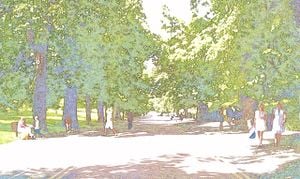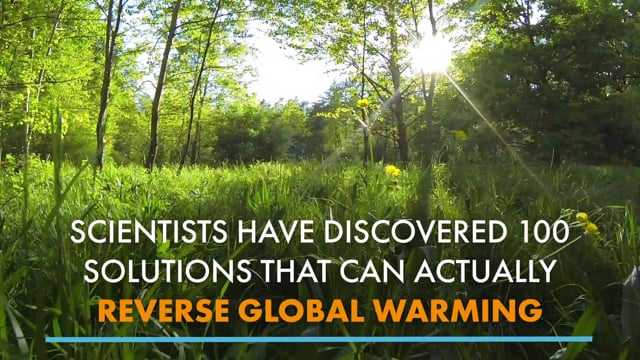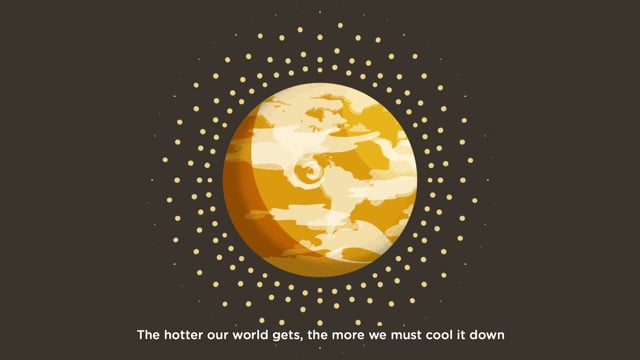
The aim of this page is to recognise, celebrate and encourage the self-empowerment of community agency networks (CANs) and community groups' activism discovering, innovating and implementing Climate change solutions. Learn about how communities positively impact through different projects and collaborations.
 Unrest in Bangladesh reflects young people’s struggle to find decent work in the world’s poorest nations, theconversation.com (Aug 20, 2024)
Unrest in Bangladesh reflects young people’s struggle to find decent work in the world’s poorest nations, theconversation.com (Aug 20, 2024)  Rio de Janeiro bay reforestation shows mangroves’ power to mitigate climate disasters, apnews.com (May 24, 2024)
Rio de Janeiro bay reforestation shows mangroves’ power to mitigate climate disasters, apnews.com (May 24, 2024)  International development can tackle the climate and migration crises together, theconversation.com (May 21, 2024)
International development can tackle the climate and migration crises together, theconversation.com (May 21, 2024)
Networks[edit | edit source]
- Rapid Transition Alliance, Rapid economic transition, including widespread behaviour change to sustainable lifestyles, is necessary to live within planetary ecological boundaries and to limit global warming to below 1.5 degrees. Rapid transition shows examples of evidence-based hope for change whose speed and potential scale will steer us towards staying within those boundaries and which advance social justice. Content published under a Creative Commons license. added 14:52, 22 January 2020 (UTC)
Research[edit | edit source]
Project Drawdown
- Drawdown, 100 solutions to reverse global warming
Project Drawdown is a climate change mitigation project initiated by Paul Hawken and climate activist Amanda Joy Ravenhill. Central to the project is the compilation of a list of the "100 most substantive solutions to global warming." The list, encompassing only technologically viable, existing solutions, was compiled by a team of over 200 scholars, scientists, policymakers, business leaders and activists; for each solution the carbon impact through the year 2050, the total and net cost to society, and the total lifetime savings were measured and modelled.
Paul Hawken has edited the book Drawdown: The most comprehensive plan ever proposed to reverse global warming to support the Project. W
Carbon literacy[edit | edit source]
Carbon Literacy is the awareness of climate change and the climate impacts of humankind's everyday actions. The term has been used in a range of contexts in scientific literature and in casual usage (see Research), but is most associated with The Carbon Literacy Project (CLP).
Open CO2[edit | edit source]
Open CO2 is a project to help crowdsource open carbon accounts for local communities worldwide. It can also be about carbon literacy, encouraging ourselves to learn more about what the available data might show. Open local carbon accounts would help make possible Participatory carbon budgeting.
- Main article: Open CO2
Participatory carbon budgeting[edit | edit source]
The idea is to combine two other ideas: participatory budgeting W and a carbon budget for an area, typically a large town or city.
- Main article: Participatory carbon budgeting
- See also: List of climate assemblies
Nature-based Solutions[edit | edit source]
"There is no pathway to net zero that does not involve a massive scale up of Nature-based Solutions (NbS). They could provide ⅓ of the cost-effective climate change mitigation worldwide, while helping communities adapt, reverse biodiversity loss, tackling climate vulnerability around the world. Despite all this just 3% of global climate fundings is invested in nature", Zac Goldsmith, UK Minister for the International Environment and Climate...quoted in Urban Nature-based Solutions in Scotland at Scale, Toward a regenerative natural asset economy, 2019- , NatureScot, darkmatterlabs.org
Natural climate solutions[edit | edit source]
Regenerative agriculture[edit | edit source]
Regenerative agriculture is a conservation and rehabilitation approach to food and farming systems. It focuses on topsoil regeneration, increasing biodiversity, improving the water cycle, enhancing ecosystem services, supporting biosequestration, increasing resilience to climate change, and strengthening the health and vitality of farm soil.
Regenerative agriculture is not a specific practice. It combines a variety of sustainable agriculture techniques. Practices include maximal recycling of farm waste and adding composted material from non-farm sources. Regenerative agriculture on small farms and gardens is based on permaculture, agroecology, agroforestry, restoration ecology, keyline design, and holistic management. Large farms are also increasingly adopting regenerative techniques, using "no-till" and/or "reduced till" practices.
As soil health improves, input requirements may decrease, and crop yields may increase as soils are more resilient to extreme weather and harbor fewer pests and pathogens.
Regenerative agriculture mitigates climate change through carbon dioxide removal from the atmosphere and sequestration. Along with reduction of carbon emissions, carbon sequestration is gaining popularity in agriculture, and individuals as well as groups are taking action to fight climate change.
Alternate wetting and drying[edit | edit source]
 Is it time to choose sustainable rice?, Wicked Leeks (Jul 17, 2023) — You might not know it, but traditional rice cultivation emits serious levels of greenhouse gases. Clare Hargreaves interviews a man working with rice farmers to get climate-friendlier rice onto British dinner plates.
Is it time to choose sustainable rice?, Wicked Leeks (Jul 17, 2023) — You might not know it, but traditional rice cultivation emits serious levels of greenhouse gases. Clare Hargreaves interviews a man working with rice farmers to get climate-friendlier rice onto British dinner plates.
Alternate wetting and drying (AWD) is a water management technique, practiced to cultivate irrigated lowland rice with much less water than the usual system of maintaining continuous standing water in the crop field. It is a method of controlled and intermittent irrigation. A periodic drying and re-flooding irrigation scheduling approach is followed in which the fields are allowed to dry for few days before re-irrigation, without stressing the plants. This method reduces water demand for irrigation and greenhouse gas emissions without reducing crop yields.
Community based emissions reduction currency schemes[edit | edit source]
A community based emissions reduction currency scheme is a C4 type local currency in which local currency issues are backed by the emissions reductions of the schemes members. The local currency, when accepted for trade by other members or local businesses, thereby rewards participants for their efforts at global warming prevention. These currencies may have various degrees of convertibility into carbon saved, renewable energy, or national currency. W
Climate-friendly gardening[edit | edit source]
Climate-friendly gardening is a form of gardening that can reduce emissions of greenhouse gases from gardens and encourage the absorption of carbon dioxide by soils and plants in order to aid the reduction of global warming.To be a climate-friendly gardener means considering both what happens in a garden and the materials brought into it as well as the impact they have on land use and climate.It can also include garden features or activities in the garden that help to reduce greenhouse gas emissions through processes not directly related to gardening.
Sustainable cooling[edit | edit source]
- This Is Cool, campaign showing what can be done across the world to make sustainable cooling a reality
Buildings designed with passive air conditioning are generally less expensive to construct and maintain than buildings with conventional HVAC systems with lower energy demands. While tens of air changes per hour, and cooling of tens of degrees, can be achieved with passive methods, site-specific microclimate must be taken into account, complicating building design.
Many techniques can be used to increase comfort and reduce the temperature in buildings. These include evaporative cooling, selective shading, wind, thermal convection, and heat storage.
Other climate change solutions[edit | edit source]
- ending subsidies for fossil fuels
- ending laws mandating car use
- meat pricing, see also Food activism
- animal husbandry
- Renewable energy, see also Community energy
- Circular economy
- Sustainable transport, see also Sustainable transport activism
- Passive House, Passive solar design
See also[edit | edit source]
- Climate change solutions UK, Climate emergency centres
- Carbon literacy
- Climate action, Climate news
- Measures to stop global warming
- Carbon offset
local information and news can be found, or shared, via our many location pages
External links
- Wikipedia:Carbon price
- Wikipedia:Passivhaus
- Carbon Farming forums at Permies.com
- Wheaton Eco Scaleat Permies.com






